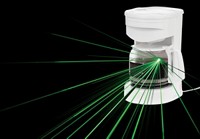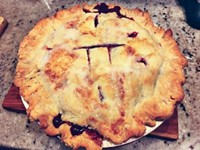Advertisement
Grab your lab coat. Let's get started
Welcome!
Welcome!
Create an account below to get 6 C&EN articles per month, receive newsletters and more - all free.
It seems this is your first time logging in online. Please enter the following information to continue.
As an ACS member you automatically get access to this site. All we need is few more details to create your reading experience.
Not you? Sign in with a different account.
Not you? Sign in with a different account.
ERROR 1
ERROR 1
ERROR 2
ERROR 2
ERROR 2
ERROR 2
ERROR 2
Password and Confirm password must match.
If you have an ACS member number, please enter it here so we can link this account to your membership. (optional)
ERROR 2
ACS values your privacy. By submitting your information, you are gaining access to C&EN and subscribing to our weekly newsletter. We use the information you provide to make your reading experience better, and we will never sell your data to third party members.
Food
Newscripts
Piping hot science: Coffee or tea?
by Mark Feuer DiTusa, special to C&EN
June 4, 2023
| A version of this story appeared in
Volume 101, Issue 18
A fine grind

Americans drink more than 491 million cups of coffee per day, according to a 2023 report from the National Coffee Association, including the many cups of joe that scientists consume before beginning their daily research grind. One popular coffee-brewing technique is known as espresso, in which water at a near-boiling temperature is pushed through a bed of ground coffee beans at multiple atmospheres of pressure to produce a piping hot drink. Viewed through a scientific lens, the water acts as a solvent in this method to extract the molecules responsible for espresso’s popular bitter flavor. Conventional coffee-brewing wisdom holds that the finer the grind of the coffee beans, the richer the flavor—and science seems to find that line of thinking sensible, as a finer grind provides more surface area for water to dissolve coffee chemicals to make your espresso extra tasty.
Not so fast, say leading coffee scientists. A few years ago, those scientists showed that the concentration of those tasty coffee molecules drops when the size of the coffee grain is below a certain threshold (Matter 2020, DOI: 10.1016/j.matt.2019.12.019). A trio of researchers led by Ann Smith at the University of Huddersfield backed up that result in a recent modeling paper (Phys. Fluids 2023, DOI: 10.1063/5.0138998).
Water flows more quickly through tightly packed coffee grains, so espresso’s fine grind increases the speed of extraction. Liberation of chemicals from the coffee grain also raises its permeability, further increasing the speed of extraction. This turns into a positive feedback loop. A variation in grind size—which there always is—results in some parts of the machine’s small coffee holder, or coffee bed, being tapped dry while others are barely touched. If the grains are small enough, less coffee is extracted overall. It’s counterintuitive, but this discovery shows that a small grind size makes espresso less concentrated than one would expect.
Tea reigns supreme as the hot beverage of choice in England, where the University of Huddersfield is located, so Newscripts was concerned about coffee studies being done by people without a stake in its deliciousness. Thankfully, Smith tells Newscripts that her lab’s prospective students have to drink the coffee they model in order to determine not only how closely their computer-made and real-life brew match but also whether they achieved a desirable result. Smith revealed, sadly, that they are not in the business of modeling the addition of cream or sugar.
Tricky teapots

For those who have enemies, would like to get rid of them discreetly, and do not have the time or wherewithal to develop an immunity to poison, Newscripts has a teapot for you. The so-called assassin’s teapot, recently made popular by a video from the YouTuber Steve Mould, can pour two separate liquids from the same vessel. By changing how they hold the handle of the teapot, selectively covering or uncovering two different holes, servers can pour themselves an untainted drink and then smoothly serve their placated prey a poisoned potable.
The assassin’s teapot contains two separate reservoirs, each connected to one of the two holes on the handle. Covering one of the holes prevents air from entering to replace the liquid except through the spout. A similar phenomenon occurs when you take a straw out of a drink while putting a finger over one end—the water defies gravity and stays in the straw.
Surface tension is a key to this trick. Air has only one path to fill the vacuum that the drink leaves behind—through the liquid itself. And surface tension, which is a result of water molecules being more attracted to other molecules via hydrogen bonding than to the atmosphere, makes it energetically favorable for the liquid to reduce its surface area. In a thin-enough spout, the air would have to dramatically increase the surface area to pass through—so much so that your drink would rather stay in the pot than obey gravity.
Of course, if one is less lethally inclined, the assassin’s teapot could be a fun way to offer multiple beverages in one receptacle or to add variable amounts of two beverages—say, coffee and cream.
Please send comments and suggestions to newscripts@acs.org.





Join the conversation
Contact the reporter
Submit a Letter to the Editor for publication
Engage with us on Twitter